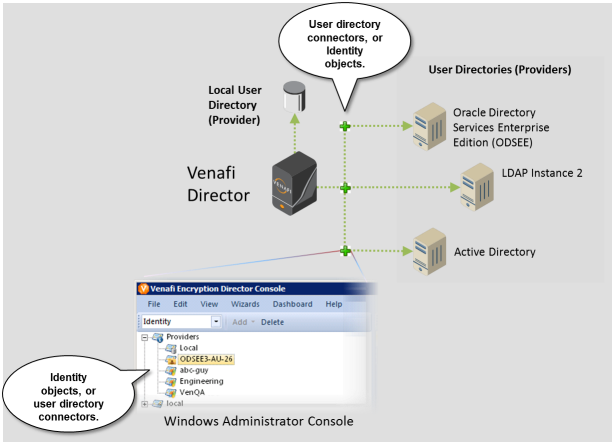Working with LDAP and Oracle directory service
CyberArk Trust Protection Foundation™ includes Lightweight Directory Access Protocol(LDAP) support for connecting Trust Protection Foundation to Oracle Directory Server Enterprise Edition, 11g for LDAP (ODSEE) (formerly, Sun® Directory Server Enterprise Edition).

Similar to Active Directory, LDAP connections are read-only. Trust Protection Foundation reads user and group data directly from LDAP in real time so you can log in as an external user, view external users and groups in the Identity tree, select external users or groups as object Contacts, and assign object permissions to external users and groups.
NOTE In Trust Protection Foundation, user directories are closed systems. This means that local users can see only local users and groups. Likewise, external users can see only external users and groups within their own directory (or, if enabled within their own directory and the local directory). For example, if you have three LDAP connections, you must log in to LDAP1 to see its contents, LDAP2 to see its contents, and LDAP3 to see its contents.
For information about allowing external identities to see local identities, see Allowing AD and LDAP users to see teams and local users.
Trust Protection Foundation supports concurrent connections to multiple external user directories. This enables you to effectively distribute encryption system administration in environments that utilize multiple user directories.